Reviews 13 min read
The most important VW of a generation?
Is Volkswagen’s ID.3 a pioneer of a new mobility era? We get our hands on the first versions to arrive in UK this autumn: The 1st Edition.
Discover EV expert verdict...
- Great styling
- Good range
- Engaging to drive
- 1st Edition too expensive
- Some cheap interior materials
- Infotainment not on a par with Tesla
Overview
The ID.3 is a very important car for Volkswagen – it is its first purpose-built electric vehicle developed from the ground-up. And with VW having recently disclosed information about more entry-level ID.3 variants bringing the entry price point down to £29,990, as opposed to £35,215 (including the plug-in grant) for the high-specification 1st Edition models (and what we’re reviewing here), could this be the modern day electric Beetle? A mass-produced, low-priced “people’s car”… VW think so (although I think MG wins on price point with its electric offering).
Not only does the number ‘3’ position the model in the compact segment, but it also signposts the beginning of the third major chapter in the history of the German brand, following the Beetle and ongoing success of the Golf. By 2029 the Group aims to sell 20 million vehicles (and 27 models) built on this new MEB platform, which also obviously includes stablemates’ Audi, SEAT and ŠKODA. Despite waiting four years from concept to production, the ID.3 1st Edition has been getting a large amount of attention and indeed praise from the world’s motoring press. It has certainly been a car we’ve been excited to get behind the wheel of for a long time, and here’s what we think of it
Driving
The ID.3 is rear-wheel drive harping back to the original Beetle, and the motor and gearbox, which together weigh only 90kg (and fit in a gym bag!) are located on the rear axle. With the battery pack being fitted below the cabin floor, it means the mass is all located low down helping it to corner flatter – it’s also a space saving measure.
The drive unit develops a total of 201bhp (150kW) and 229lb-ft (310Nm) of torque, affording it a fairly respectable 0-62mph time of 7.3 seconds (its off-the-line acceleration is equivalent to a Golf GTI), before it runs out of puff at 99mph. It’s certainly no drag-race queen like Tesla’s offerings but it’s very responsive – great to drive round town (especially with a 10.2 metre turning circle that closely matches the up!) but also on the motorway, it still enthusiastically picks up at 60mph when you need to overtake. There’s very little wind or tyre noise at speed, either, no doubt helped by the fact even the windscreen is made from acoustic glass. There’s also no dreaded torque steer that so many EVs suffer from. You can choose between three driving modes, but the differences between Eco, Comfort and Sport are subtle, so we found ourselves making our decision based on the situation and how much range we had left.
Having been impressed with the way the e-Golf drove on our week with it, we had high hopes for the ID.3 and we weren’t disappointed. It’s different in that the electric motor doesn’t drive the front wheels, but that’s not a bad thing. On the way out of a sharp bend, the car squats down and you get a real feel of being thrusted from the rear – it reminded me of BMW’s 1 Series (before it switched to front-wheel drive, of course). It feels beautifully balanced, well damped doing a supreme job of ironing out bumps (despite riding on 19s), there’s plenty of grip and the steering is light but accurate. It lacks the Golf’s hot hatch supple feel tipping the scales at 1794kg but it still retains that VW assured feeling of being predictable and composed, and more importantly it is really enjoyable to drive.
To make things simple, drive is engaged via a large rocker switch that awkwardly protrudes out of the instrument display – twist forward for D (drive) and then again for B (regenerative braking) or backward for reverse. In a similar less is more philosophy there are no paddle shifters for extra regen modes, just that aforementioned B mode, which adds some braking effect from the electric motor as it harvests energy, but nowhere near the level of one-pedal driving offered by the Nissan LEAF. It isn’t much of a surprise when you consider Audi and Porsche have taken the same approach with its e-tron and Taycan respectively. The mix of regenerative and friction braking at least feels more natural than in many other EVs we’ve driven. I hadn’t noticed until my youngest step son pointed it out, but the brake and accelerator pedal have a pause and play icon on them, which is a fun touch – if you’re 12!
Range and running costs
The ID.3 First Edition Pro Power 58kWh has a 260 mile range which is more than enough for most people’s needs. It also delivers what it tells you it will – if you drive it sensibly, of course. Drive it like Miss Daisy and it goes beyond the call of duty. I had 60 miles of range and decided to see what I’d have left after a 39 mile round trip to drop off my oldest step son to swimming. I finished my little experiment with 30 miles left to play with (much to our relief). The trip computer over the past 500 miles showed an average of 3.2 miles per kilowatt, which isn’t far off VW’s claimed combined consumption figure of 3.96, and most of those miles were driven with gusto, shall we say. We suspect some drivers could easily get over 4m/kWh in daily driving.
The ID.3 will accept charge at anything up to 100kW, and if you can find one, a rapid charger will add 180 miles of range in half an hour. On a more commonly found 50kW charger you'll be waiting for around 60 minutes to go from a 10-80% charge, while from a 7.4kW wallbox you’re looking at nine hours for a full charge – which is perfect if you juice up overnight at home.
Volkswagen UK has several partners to help provide green energy. One is Octopus, which provides renewable energy for homes and if you switch both gas and electricity to said home electricity provider you will be eligible for a £90 credit to your energy bill worth up to 8000 miles of free driving. Public chargers are also being rolled out in partnership with Pod Point and Tesco across UK stores. These chargers also use green energy and cost customers nothing to use! In addition, our model came with We Charge, which provides access to more than 150,000 public charge points, including the IONITY fast charging network, and comes with up to one year of free charging (or 2000 kWh or £500, whatever comes first).
Prices for the range start from £29,000 for a base-spec ID.3 Life (with 263 miles from the 58kWh battery) to £39,290 for the Pro S ‘Tour’ (offering 340 miles with the 77kWh battery). If you want a Life variant on PCP it will cost you from £395 per month at 5.7% APR representative (over 47 months) with a deposit of £2802.57. The ID.3 is expected to hold onto around 48% of its value after three years and 36,000 miles of ownership. Interestingly, from next year we will get lower-spec cars with a 45kWh battery and a range of 205 miles as well as a less powerful motor. It'll be known as Pure Performance and is expected to cost less than £27,000.
New research has shown that the average zero-emission model is now cheaper to own than a petrol or diesel car. On average, an electric vehicle would cost the owner £3752 a year over the course of its life, compared to £3858 for a petrol car, resulting in an annual saving of £107, according to Direct Line. So while upfront costs and insurance (interestingly this model sits in the same group at the Golf GTI) are more expensive on an electric car, the savings made in having to ‘fuel’, tax and maintain one make up for it. Business users will see even more savings with 0% BiK company-car tax rate (2020/21), while driving into congestion charge areas will cost you nada.
Design
The ID.3 is one of those cars which look so much better in the flesh, and we got a number of admiring glances and comments about its styling over our week with the car. Up front there’s no grille which harks back to the first models from Volkswagen; instead the cooling air for the drive units flows in through an intake in the bumper. Instead it’s the large headlights that are the most striking feature. LEDs are standard and intelligently controlled IQ. Light, which is available with the Design package, means you can leave on your main beam without blinding oncoming drivers.
In profile the ID.3 looks quite sporty with its black roof, low glasshouse that runs out into a long spoiler, 19 inch wheels and strong C pillar, which is a traditional Volkswagen design feature. There’s a choice of six colours at launch, our test car was Manganese Grey Metallic and it looked very smart indeed.
Despite having a similar footprint to a Golf, interior space comparable to a Passat and that’s because the axles have been moved well apart. The high-voltage battery is located as a flat block under the passenger cell, and all the other technical components take up minimal space with the drive unit on the rear axle, and the radiator and air conditioning system in the short front end. With all that hardware under the bonnet it does means there’s no frunk.
It feels light and airy, and the design is very clean and concentrated with no conventional centre console, giving the cabin a futuristic feel without being too revolutionary. Otherwise, it’s what you’d expect from VW – the colours are funky but fairly muted, there are plenty of soft touch materials and everything feels well screwed together. Sadly, there is also a smattering of cheap, scratchy looking plastics, no doubt a cost-cutting exercise to help offset the high costs of producing an EV.
Comfort and practicality
Despite looking fairly compact from the outside, space inside is similar to a mid-size car. The driver and passengers sit at a pleasantly high level, and there is good all round visibility. It’s comfortable, too, even after a few hours behind the wheel. The luggage compartment can accommodate 385 litres of luggage, and its volume can be increased to 1267 litres with the rear seats down. Annoyingly there’s no specific cubby hole to store the charging cable – as with rivals, which is a disappointment considering it’s a purpose-built electric car. The ID.3 Pro S only accommodates four people, but all other variants are five seater models.
There’s good storage space available, with the centre console housing various cubby holes and two reasonably sized drink holders. The door bins are also a decent size, as is the glovebox and in the back there’s plenty of leg and head room for taller passengers. They get access to door bins, and pockets for maps (does anyone use these anymore) and mobile phones.
The Volkswagen ID.3, like so many new generation cars, has a distinct lack of physical buttons. While this means the cabin looks minimalist and modern, it can make certain functions frustrating to use while driving.
To that end, in front of the driver is a 5.3 inch display which is operated with touch-sensitive controls in the multifunction steering wheel. Three tiles show the most important information, with display of the battery status and range underneath. The central 10 inch touch display is located in the middle of the dash panel angled slightly towards the driver and manages all of the functions by – yep you guessed it – touch control. Below that are touch-sensitive sliders for the audio volume and cabin temperature, which are also less precise than traditional knobs. Bizarrely (and annoyingly) the buttons for the lights are hidden behind the indicator stalk.
The software is way ahead of the Nissan LEAF but nowhere near as slick as the Model 3’s, it’s confusingly laid out and sometimes laggy. It makes you realise how BMW’s physical iDrive controller is a great example in how to make a complex system easy to operate on the go. There is an alternative, and that’s “Hello ID.” intelligent voice control, which is capable of understanding many everyday commands, but even this was annoying as a lot of the time it thought my 3-year-old son was giving it instructions. Another bugbear, is the fact there’s no wireless phone charging, even as an option.
I’m not quite sure on the usefulness or added value of the ID.Light, a new and unique feature. It’s basically a strip of light that runs beneath the windscreen and spans the width of the interior, and visually communicates with passengers. So, it responds to voice inputs and moves to the left or right depending on where you are indicating. It can also highlight dangerous situations in intense red and during charging indicates the battery level.
We drove the 1st Edition trim, and it’s well kitted out, leaving you wanting for nothing. We Connect Start is included for the first three years, which includes vital navigation and vehicle-related services. The driver is not only provided with up-to-the-minute information on the situation on the selected route and possible hazards, but it also offers live data on charge points in the vicinity. This includes details on their charging capacity, tariffs and availability.
Verdict
At this price point, we think prospective buyers will be prepared to stretch a few grand to a Polestar 2 or an entry-level Tesla Model 3, which has a much better charging network. The cheaper versions of the ID.3 however will have a lot more appeal and present stiff competition to the Nissan LEAF and in fact most of the players in the same segment, especially the smaller-capacity 45kWh battery pack option. It won’t go as far per charge, but it will make the ID.3 more affordable to more people and still have 200 useable miles.
We can see it being very popular – the ID.3 is an accomplished all-electric family hatchback. Its exterior styling makes a statement, the interior is innovative and distinctive yet practical and comfortable, it drives beautifully, boasts usable, real-world range and fast charging capability.
So, okay the lack of physical buttons could divide opinion (and already has among motoring journalists) and some might find the harder interior plastics disappointing, but the sub £30k version stands head and shoulders above its rivals.
The Beetle and Golf defined how we saw family cars, and that’s what the company hopes will happen with the ID.3, and we definitely think it’s got a good chance of being the next definitive people’s car. It will never be the next Tesla, but it will be the yardstick against which all others are judged, which let’s face it the Golf does very well.
Key Specs
2020 Volkswagen ID.3 First Edition Pro Power 58kWh
Price (RRP OTR): £35,215 including plug-in car grant
Top speed: 99mph
0-62mph: 7.3 seconds
Power: 201bhp (150kW)
Torque: 229lb-ft (310Nm)
Driving range: 260 miles
Charging time: 30 mins (100kW, 0 to 80%); 9 hours 30 mins (7.2kW, 0 to 100%)
Insurance group: 28E
Vehicle warranty: 3 years/60,000 miles
Battery warranty: 8 years/100,000 miles

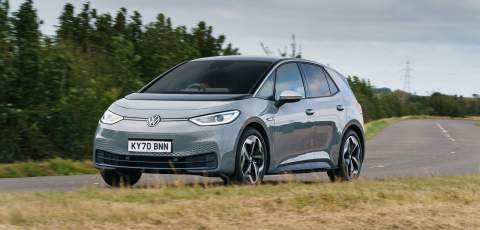

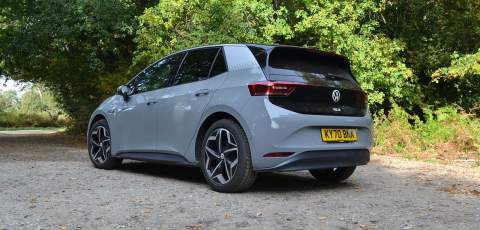
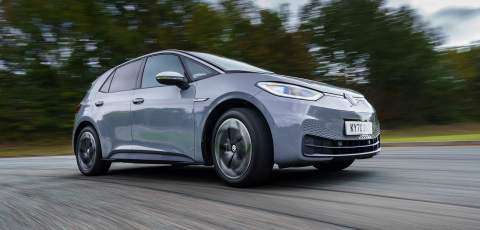
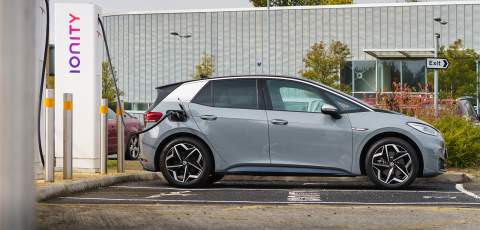
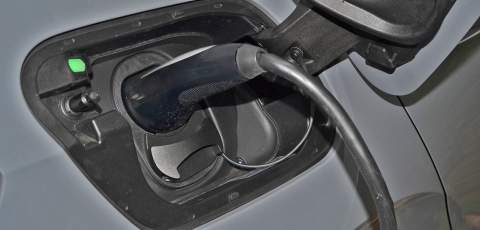
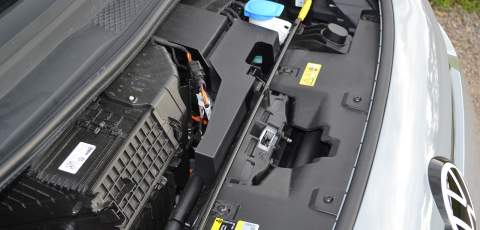
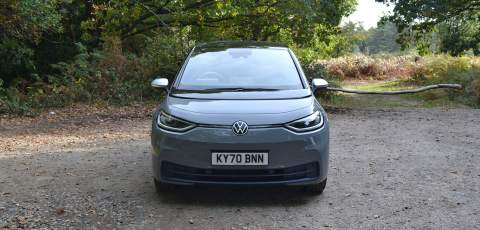
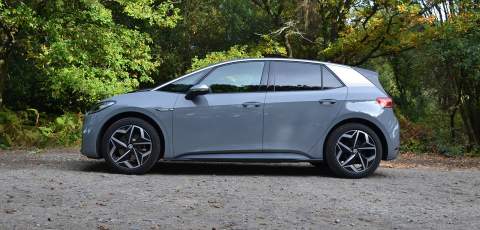
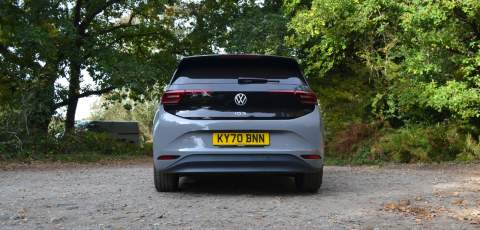
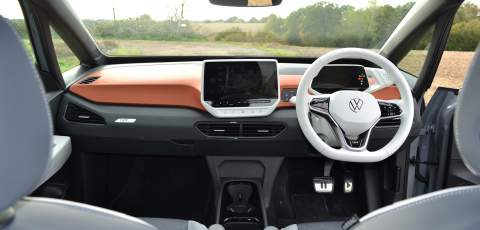
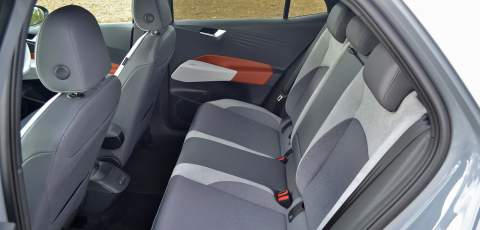
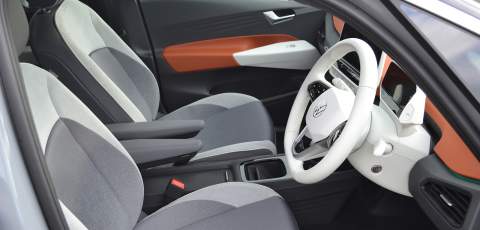
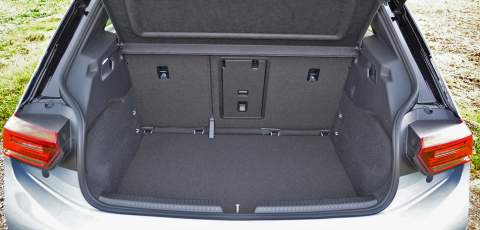
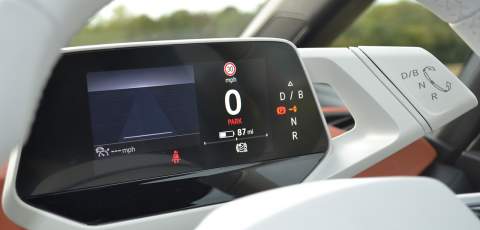
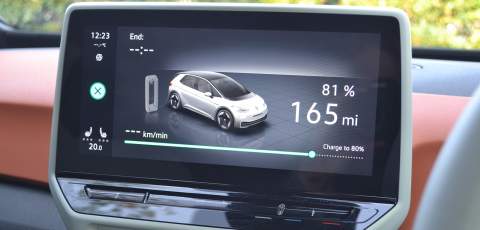
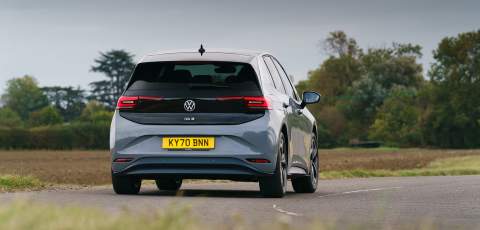

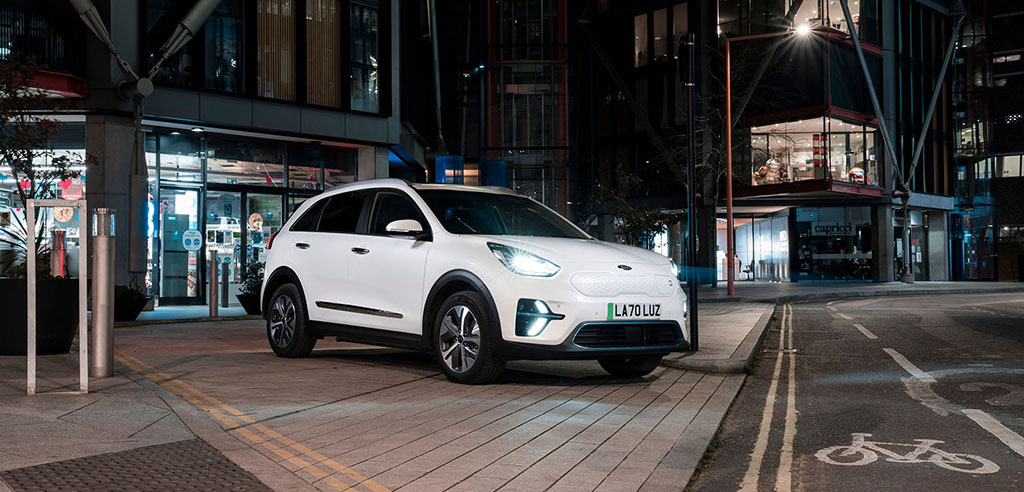
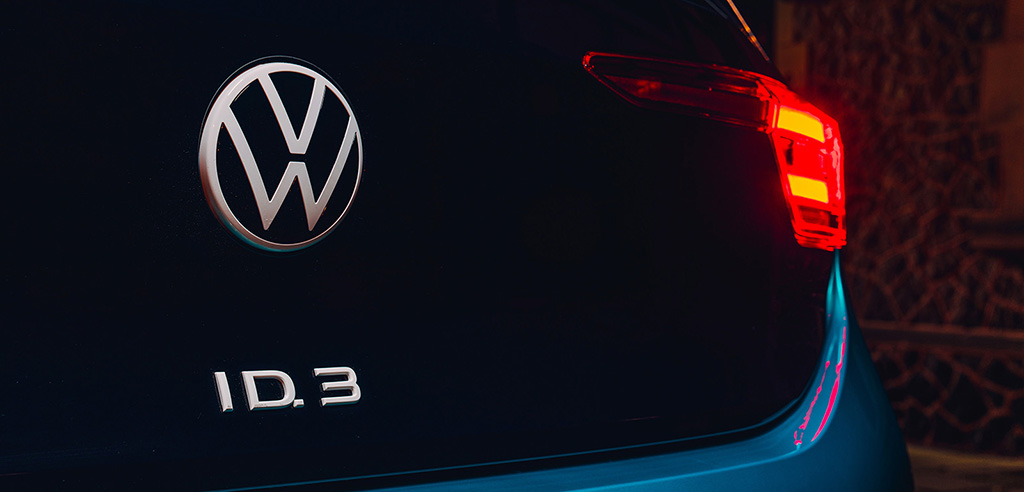
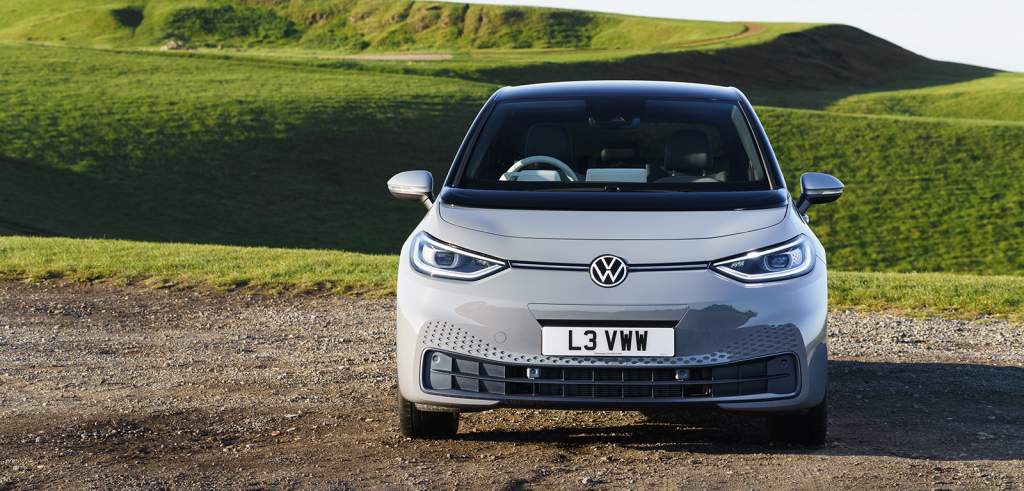
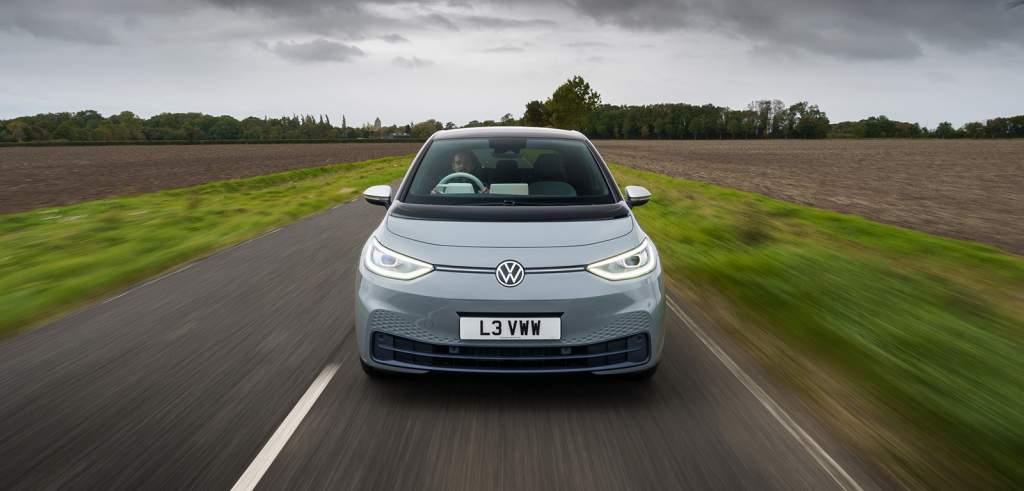
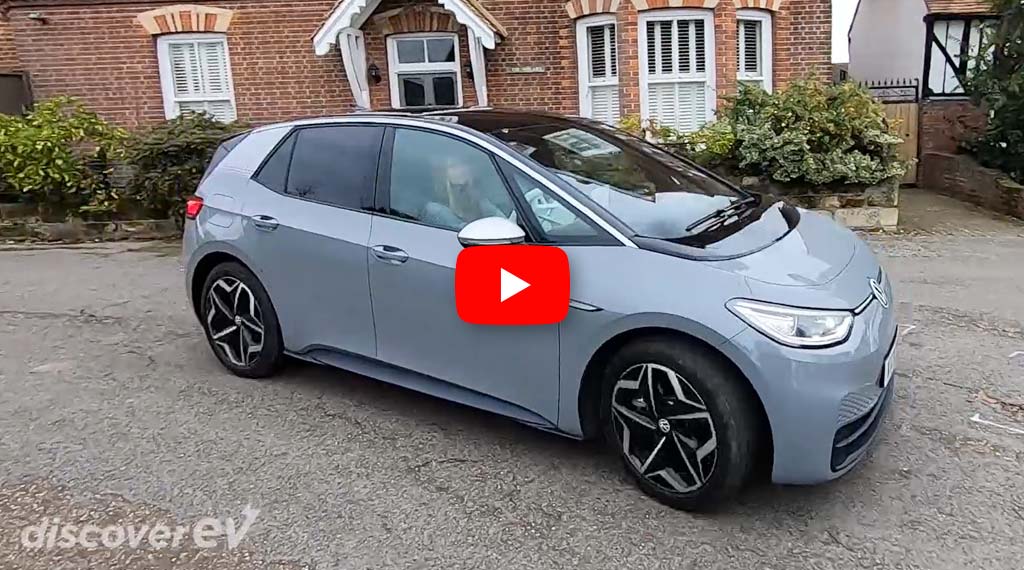
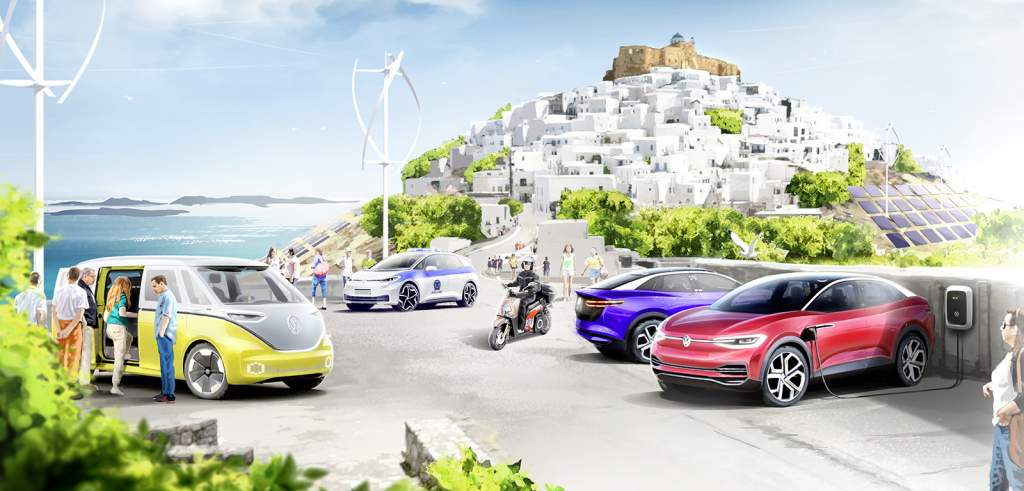

Comments (0)
Be the first to write a comment
Login/ Signup